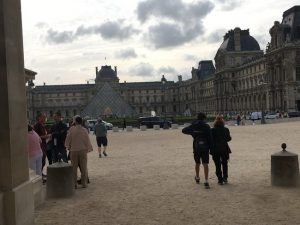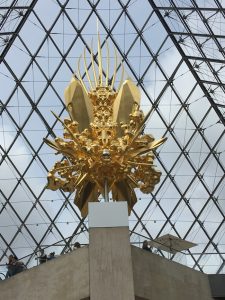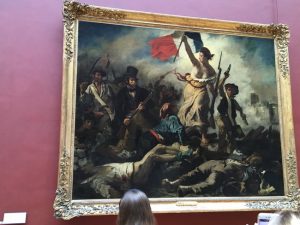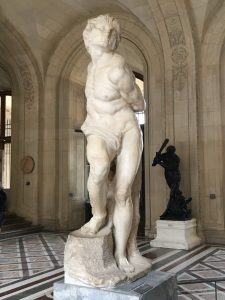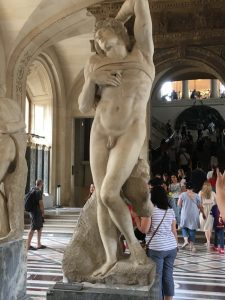Tag Archive
activity architecture art artist building Canada children city CostSaver downtown drive i-95 entertainment Europe event exhibit family festival Florida food fun historic History landmark local Museum music Nature New Zealand Ontario roadtrip sculpture Seattle show sights sightseeing tour tourist Trafalgar travel travelblogger view Washington Washington State water world
France, Paris: The Throne in the Palace of the Louvre
.
France is celebrating 160th anniversary of diplomatic ties between France and Japan. Japonismes 2018: Les Ames en Resonance, will run through February 2019 involving exhibitions and events promoting Japanese art and design. Visual artist Kohei Nawa’s monumental sculpture “Throne” has one of the most prestigious spots in Paris: the Louvre. “I see the location as a connecting portal of modern lifestyles and the past, says Nawa, the Kyoto-based artist whose 10.4-meter-tall work is installed under I.M. Pei’s 1989 glass pyramid in the Louvre’s main courtyard.
The making of the throne itself involved both the past and the present. It was designed using state-of-the-art 3D modeling software and carved by robotic arms, however its gleaming gold leaf exterior was hand-applied by Japanese traditional craftspeople.
“The maximum capacity the pyramid can hold is 3 tons, so I told the museum I would ship a sculpture weighing exactly 3 tons,” says Nawa about the work’s creation. “I think they were bit worried, but after it went up, the Louvre’s curator, Martin Kiefer, told me the sculpture looks like it’s been at the pyramid all along.”
It’s not Nawa’s first “Throne” and it is different in that in previous iterations there was usually a small child seated within Nawa’s unique abstract shapes and geometric forms. For the Louvre, the seat is strikingly empty.
“Thrones are for kings. Here, the seat is for the authority that will eventually take over the control in the future. I left the seat empty to emphasize the invisibility,” says Nawa.
It sounds ominous, but Nawa goes on to explain that he foresees the type of power we see controlling today’s politics, economy and lifestyles as disappearing in the future, and in its place will be a very different form of authority. It could be artificial intelligence and advanced computer technology that will “take the throne,” he suggests, while we blindly follow, something that history has shown us that humans have had the tendency to do.
To us it is interesting that he chose a throne to be placed in this, the Palace of the Louvre, where French Kings sat on their thrones. Francis I chose this edifice as the residence for French kings and where it remained thus until good old King Louis XIV decided to move to Versailles and this building was then used to store his pretty things.
France, Paris: Liberty Leading the People in the Louvre
.
Though foreigners flock to see the Mona Lisa, to the French, the most important painting in the Louvre – the unofficial national painting of France is this one, Liberty Leading the People by Delacroix. The bare-breasted female figure, who is called Marianne became a symbol of Liberty for the French Republic. Though Delacroix painted the July Revolution of 1830, the broken bodies beneath the flag depict the 40 years of civil war, political and social upheavals necessary to conquer the monarchy in order to win a representative government. The huge 8′ by 10′ scale adds to the dramatic patriotism.
France, Paris: Michelangelo’s Slaves
.
With everyone crowding in to see the Mona Lisa, you can head elsewhere in the Louvre Museum to find 100’s of other famous artists’ works, starting with Michelangelo. He was so brilliant at coaxing human emotions out of the stone. Here are two representations of slaves so painfully showing their despair.
France, Paris: Louvre Palace
.
You might not have known that the world’s largest art museum, the Louvre was a palace. Before that it was originally built in the late 12th to 13th century as the Louvre castle under Philip II. Francis I chose it as the residence for French kings where it remained until good old King Louis XIV decided to move to Versailles and this building was then used to store his pretty things.